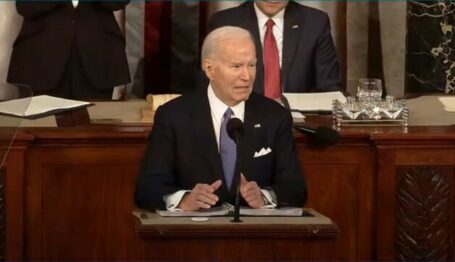Labor Watch
Employee Rights Act Is Back
 Credit: ojka. License: Shutterstock.
Credit: ojka. License: Shutterstock.

This week, Rep. Rick Allen (R-GA) and Sen. Tim Scott (R-SC) introduced the version of the Employee Rights Act (ERA) for the 118th Congress. The ERA seeks to be the pro-worker and pro-small-business response to Big Labor’s various coercive agendas, whether advanced through the Biden administration and National Labor Relations Board (NLRB) regulatory processes or congressional legislation like the Protecting the Right to Organize Act (PRO Act).
This version of the ERA has been tightened and narrowed in scope from the previous Congress’s. Out, among other elements, are provisions targeting union corruption by requiring disclosures of union “trust” finances and a provision increasing disclosures on union cards that other changes in ERA would render somewhat redundant. The remaining five provisions focus the legislation on increasing the power of workers over labor unions and the power of small business owners over ideologically motivated woke-left regulators like Labor Secretary nominee Julie Su.
The Provisions
The new, more narrowly focused Employee Rights Act contains five major provisions, each targeting an effort by the Biden administration, the NLRB, or other politicians loyal to supporters in Big Labor to expand or maintain union power over workers and small business owners.
As in every incarnation of the ERA, the new version requires that union organization decisions and strike authorizations be determined by secret-ballot votes of the workers themselves. NLRB General Counsel Jennifer Abruzzo, the former union lawyer appointed by President Joe Biden, is considering bringing cases to revive the so-called Joy Silk doctrine, which would create a de facto preference for card-check union organizing. The ERA would establish a statutory standard that would forever bury the doctrine and prevent activist bureaucrats like Abruzzo from trying to conjure it from the dead.
Congressional Democrats through the PRO Act and state-level Democrats in places like Michigan seek to reverse the gains made by right-to-work forces in the past decade, compelling more unwilling workers to pay union dues that fund those Democrats’ close political allies. The ERA would limit such involuntary funding and strike a blow against social justice unionism by requiring unions to obtain affirmative permission before using workers’ dues or compulsory fees for political and advocacy purposes.
The Biden Labor Department, in line with the “every job a factory job” agenda of its supporters in Big Labor, has pushed forward with regulations to restrict independent contracting and target the franchise-ownership business model with “joint employer” doctrine changes. Both changes would classify more workers as unionizable employees and hold easier-to-pressure national companies jointly liable for franchisees’ business practices. These changes are directly designed to conscript more workers into unions and weaken the petite bourgeoisie that supports the Biden administration’s political rivals across issue areas.
Finally, the legislation would restrict the collection and use of private contact information by labor unions in organizing campaigns. These are modeled on the rules that the previous Congress’s version of the ERA would have enacted.
Searching for Support
The Employee Rights Act hopes to find support beyond the traditional business interests and ideological conservatives who have historically opposed organized labor’s coercive power. Prior ERA versions with similar proposals have polled well with the general electorate and with respondents from union households.
Even some groups that have sought to strengthen organized labor, like American Compass, have suggested and presented polling showing that union politics is the “number one obstacle to a robust American labor movement.” Shouldn’t the ERA’s political protections then be appealing?
Big Labor has an advantage over worker freedom advocates in corralling support for its labor-policy legislation: Its endorsements and resources are a pillar of the Democratic Party. This is why the U.S. Chamber of Commerce got to see all the Democrats it endorsed in the 2020 elections vote for the PRO Act. The cross-party support those members received from the business community could not compete with the institutional strength of Big Labor in the Democratic coalition.
The history of legislative efforts countering organized labor coercion since the New Deal established the law regime for American labor relations is not one of mighty business fighting plucky unionists. Instead, the story is more of Big Business reacting to and attempting to co-opt Big Labor, with workers, consumers, and small business owners squeezed between them.
Big Labor, especially today’s social-justice-unionism-motivated version of Big Labor, will not appreciate any effort to constrain its political activities or limit its powers. But, as has been demonstrated in state-level fights that saw right-to-work laws reversed in a Missouri ballot measure and the Michigan legislature, if the other side is unwilling to commit the resources to counter Big Labor, Big Labor will work its will.
The Employee Rights Act is now on the table. Will its supporters please now stand for it?



